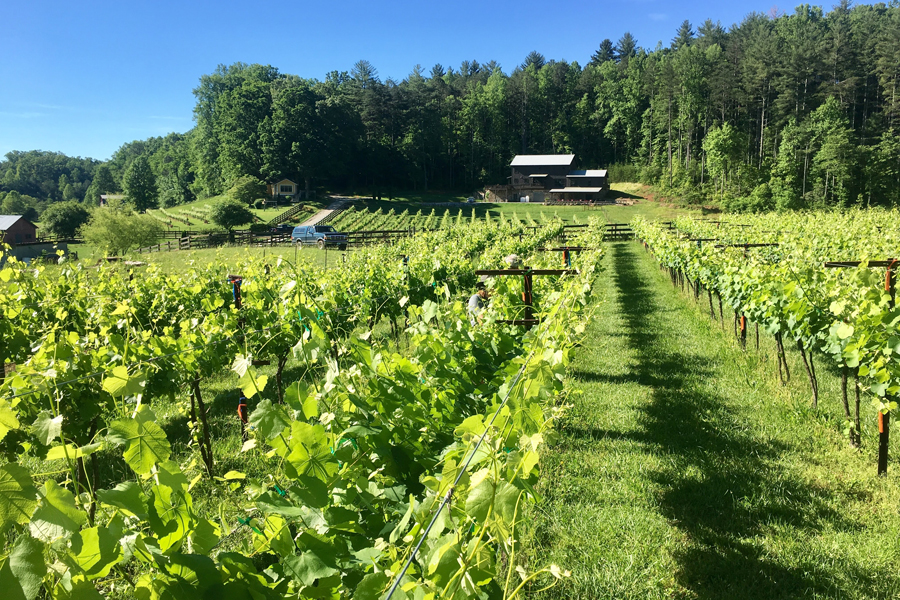The Athena bunch wine grape training system was developed by the University of Georgia to increase crop yield in modest-yielding cultivars. The Athena is a divided-canopy system retrofit to the industry standard single-canopy trellising system with vertical shoot positioning. Athena training involves laying four canes and dividing the canopy through a series of cross arms fastened to the vineyard posts in a V-shape. The goal of this publication is to educate new growers, seasoned industry members, and Extension agents on the Athena training system for bunch wine grapes.
For the full publication, please click on the “View PDF” button above. The glossary from this publication has been published below for easy reference.
Glossary
Bud – Typically refers to buds contained on 1-year-old grapevine wood (e.g., canes and spurs) from which fruitful shoots grow in the spring
Cane – A former green, vegetative shoot that has hardened off and become dormant; 1-year-old grapevine wood that generally contains fruit-producing buds
Catch wire – The trellising system wire used to guide canopy growth and maintain its physical position to optimize leaf exposure
Cordon – A former cane that is a lateral extension of the trunk along the fruiting wire and is at least 2 years old; also refers to a training type (“cordon training”) with which spur pruning is commonly implemented
Dormant pruning – The selection and retention of fruitful, 1-year-old grapevine wood through cutting and discarding older, undesirable, and diseased grapevine wood; spur or cane pruning methods are most common
Fruiting wire – The wire on which the fruiting cane or cordon is tied; becomes the crop load bearing wire
Head – The region of a vine where the vertical grapevine trunk meets the horizontal fruiting wire, also called the “crown” region; refers to a training type (“head training”) with which cane pruning is commonly implemented
Shoot – The green stems and leaves that grow from dormant grapevine wood; shoots grow from buds in the spring then become canes once they drop leaves and become dormant in the fall
Shoot thinning – A practice that removes the shoots that do not bear fruit clusters and shoots in highly dense areas on the vine early in the spring before the shoots harden onto the vine and become difficult to remove
Shoot training/positioning – A management practice that tucks shoots “flopping” into the row between trellis catch wires to prevent damage to the shoots and maintain canopy structure
Spur – 1-year-old grapevine wood that is cut back to one to three buds that bear new shoots the following season; a “short” or “spurred” cane position
Grapevine training – Used to describe the grapevine training method for which 1-year-old grapevine wood is retained to produce fruit-bearing shoots; the two most common training methods are cordon training (with spur pruning) and head training (with cane pruning)
Training systems – Refers to combinations of trellising systems with the implemented training dormant pruning method; not an interchangeable term with trellising systems
Trellis – Physical framework of cross arms and wires used to guide and direct grapevine growth







